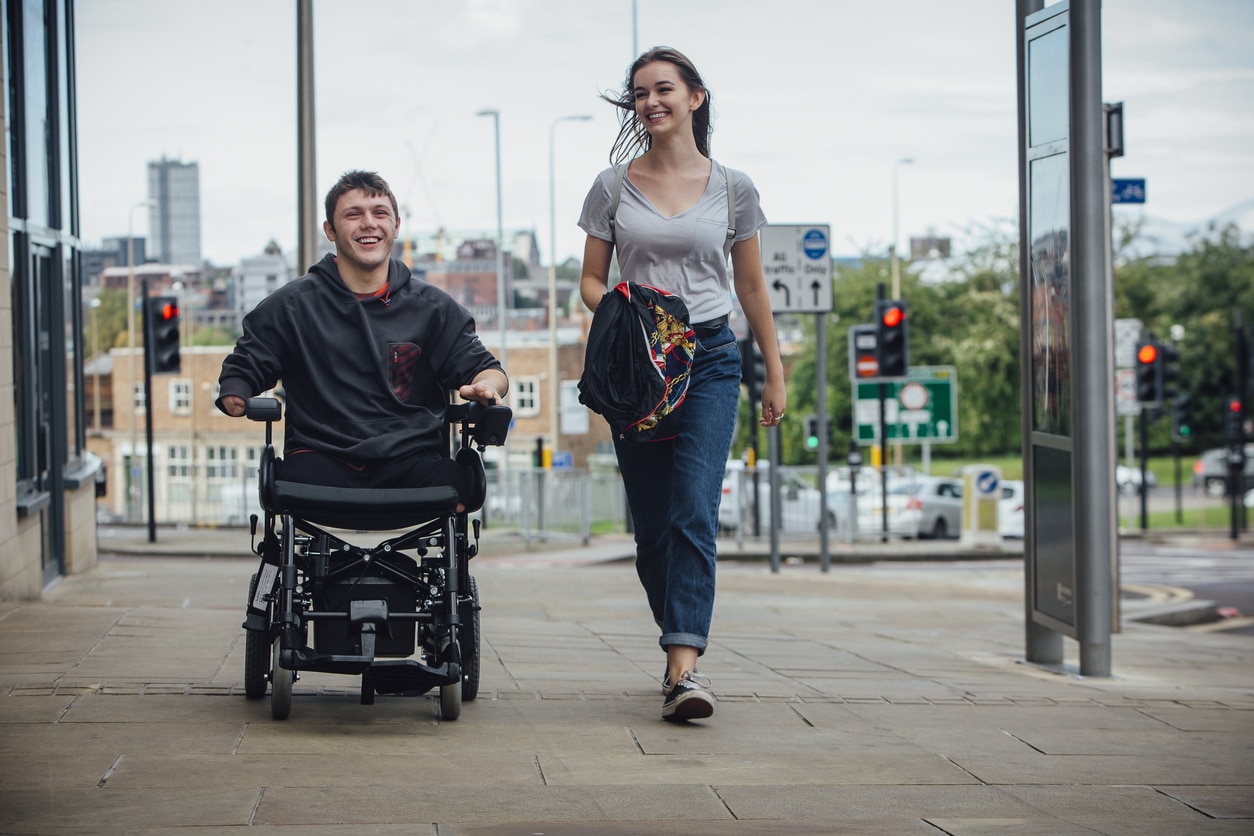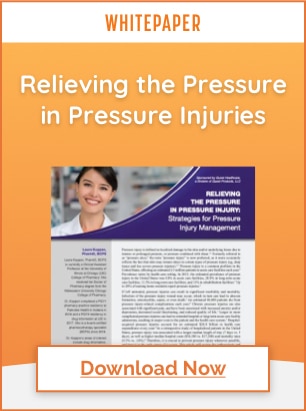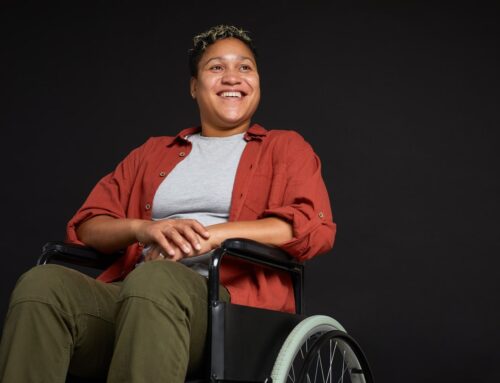
Autonomic Dysreflexia: Symptoms, Causes, Prevention & Bowel Care
Approximately 291,000 Americans have a spinal cord injury (SCI). Reported prevalence rates vary for Autonomic Dysreflexia (AD) in the US, but the generally accepted rate is 48-90% of all individuals who are injured at T6 and above.
Patients who have a complete injury (no motor or sensation below the level of the spinal cord lesion) have a much higher incidence of AD (91% with complete injury vs. 27% with incomplete injury). Assisting patients and caregivers in identifying an episode of AD is paramount before a patient transitions home.
What is Autonomic Dysreflexia?
Autonomic dysreflexia is a potentially dangerous and, in rare cases, fatal clinical syndrome that develops in individuals with SCI, resulting in acute, uncontrolled hypertension. All caregivers, practitioners, and therapists who interact with individuals with SCIs must be aware of this syndrome, recognize the symptoms, and understand the causes.
AD is characterized by an abrupt onset of excessively high blood pressure caused by uncontrolled sympathetic nervous system discharge in persons with SCI. It develops in individuals with neurologic level of spinal cord injury at or above T6.
The pathway of AD starts with stimulus below the level of injury, where nerve signals sent to the brain are blocked at the point of injury. The sympathetic nervous system is activated, causing a hypertensive response.
Early Signs and Symptoms of Autonomic Dysreflexia
There may be no symptoms of AD other than elevated blood pressure, although patients may have profuse sweating above the level of the lesion, especially in the face, neck, and shoulders. These symptoms rarely occur below the level of the lesion due to sympathetic cholinergic activity. Patients may also experience goosebumps, a flushed feeling, nasal congestion, and/or a severe headache.
A patient may have one or more of the following cardia symptoms:
- A significant rise in both systolic and diastolic blood pressures (20 mm above baseline), so it’s important to know each patient’s specific baseline to help determine a potential occurrence of AD.
- This rise in blood pressure may or may not be accompanied by a normal pulse rate or slight tachycardia.
- A normal systolic blood pressure for patients with SCI above T6 is 90-100 mm Hg. Blood pressure 20-40 mm Hg above the reference range may be a sign of AD.
What are Common Causes of Autonomic Dysreflexia?
Episodes of AD can be triggered by several potential causes. Essentially, any painful, irritating, or even strong stimulus below the level of the injury can cause an episode of AD.
Bladder distension or irritation is responsible for 75-85% of AD cases. Bladder distention is commonly caused by a blocked or kinked catheter or failure of a timely intermittent catheterization program.
The second most common cause of AD is bowel distention, typically due to fecal impaction. This accounts for 13-19% of cases of AD.
The three most common causes of AD (listed in order) are:
- Full bladder
- Full bowel and painful bowel movements
- Skin impairments
Clinicians, patients and caregivers should rule out each of these potential causes before examining any potential additional related issue(s).
The following events or conditions can also cause episodes of AD (this is not a comprehensive list, but some of the most common):
- Urinary tract infection
- Cystoscopy/Urodynamics
- Detrusor-sphincter dyssynergia (sphincter spasms)
- Epididymitis or scrotal compression
- Painful or difficult catheterization
- Gallstones
- Gastric ulcers or gastritis
- Invasive testing
- Hemorrhoids
- Gastrocolic irritation
- Menstruation
- Acupuncture/Botox injections
- Appendicitis or other abdominal pathology trauma
- Pregnancy (especially labor & delivery)
- Vaginitis
- Deep vein thrombosis
- Pulmonary emboli
- Pressure ulcers
- Burns or sunburns
Tips on Prevention of AD
Patients who have previously experienced autonomic dysreflexia may be able to prevent the recurrence by employing some simple prevention strategies to help mitigate further episodes of AD.
- Intermittent catheterization should be regular and timely; only clean catheters should be used. Indwelling catheters should be changed routinely and regularly checked for blockage or kinking.
- A regular bowel program is essential for the prevention of constipation and fecal impaction.
- Routine weight shifts and skin checks are necessary to prevent ulceration. Any skin breakdown should be addressed early by a knowledgeable wound care team or physician.
- Keep bladder volumes within acceptable ranges
- Some patients may need additional medications to relax their bladders
- Sunscreen use and adequate hydration
How Does Bowel Care Affect Risk of Autonomic Dysreflexia?
Bowel issues are ranked as the second most common cause of AD in patients with SCI.
All aspects of a bowel management program should be designed to be easily replicated in the individual’s home and community setting.
Effective treatment of common neurogenic bowel complications are necessary to minimize potential long-term morbidities.
Particular areas of concern include:
- Constipation
- Performing bowel care
- Hemorrhoids
- Anal fissures
- Painful bowel movements
Red Flags of an Ineffective Bowel Management Care Program
Patients and caregivers should remain alert for the following signs of a potentially ineffective bowel management program:
- Stool that is hard, dry, and/or ‘pellet-like’
- A bowel program that takes longer than one hour to complete
- Bowel accidents and/or incontinence
- Skin irritation related to incontinence or products used to stimulate the bowel
- Excessive gas
- A patient’s lifestyle revolves around bowel care
The Enemeez® Advantage
The Enemeez® mini-enema delivers 283mg of docusate sodium and functions as a stool softener laxative by drawing water into the bowel from surrounding body tissues, softening the stool and promoting a bowel movement.
Enemeez® Plus contains an additional 20mg of benzocaine, assisting in the anesthetization of the rectum and lower bowel. The formulation was developed for patients who experience hemorrhoids, fissures, or painful bowel movements.
>> Request a sample of our products for your facility today. <<
Disclaimer: The material contained is for reference purposes only. Alliance Labs, LLC and Summit Pharmaceuticals do not assume responsibility for patient care. Consult a physician prior to use. Copyright 2020 Summit Pharmaceuticals and Alliance Labs, LLC.
Sources:
The Impact of Autonomic Dysreflexia on Blood Flow and Skin Response in Individuals with Spinal Cord Injury C. Ramella-Roman and J. M. Hidler
Lindan R, Joiner F, Freechafer A, Hazel C. Incidence and clinical features of autonomic dysreflexia in patients with spinal cord injury. Paraplegia. 1980. 18:285-292.)




![[Live Webinar] Neurogenic Bowel Dysfunction in Multiple Sclerosis](https://www.questhealthcare.net/wp-content/uploads/2025/02/325-Quest-Healthcare-Speaker-Session-1-500x383.png)


